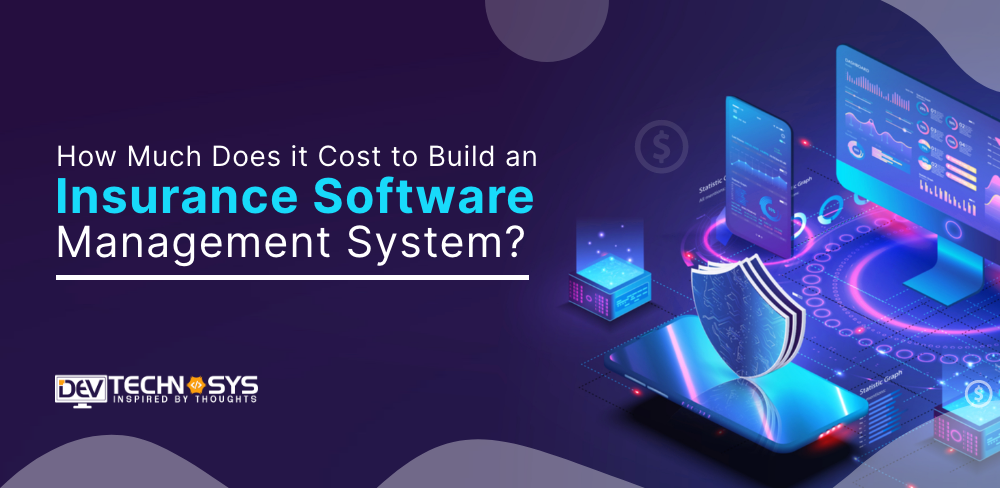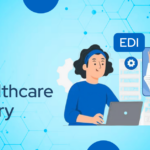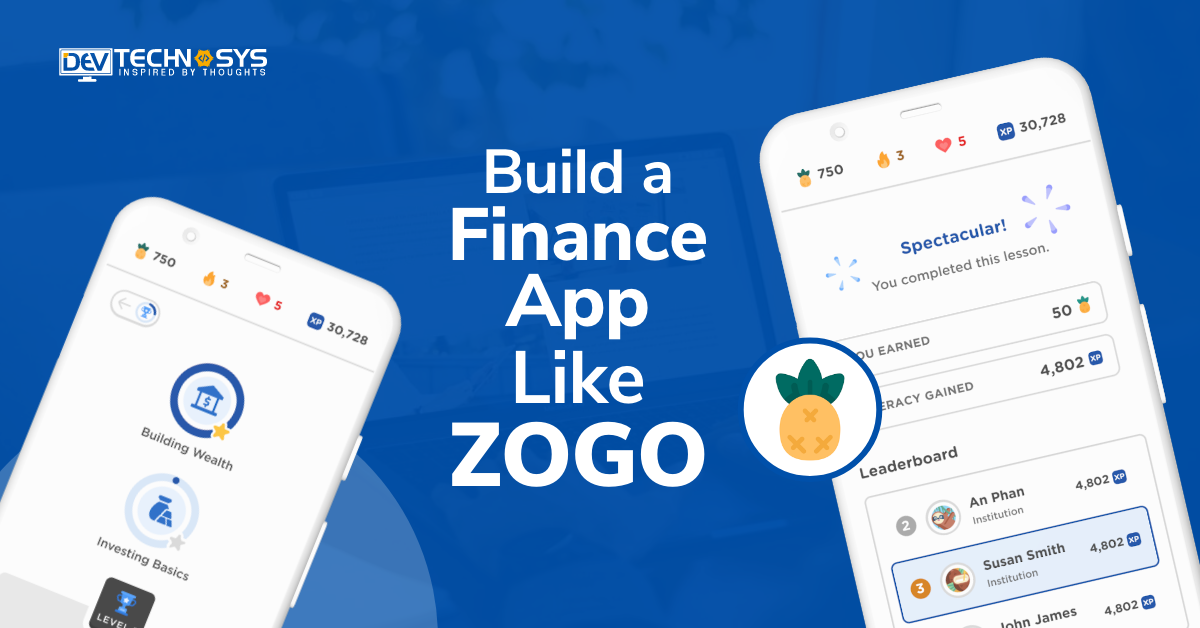Hello there!!
Are you looking to develop an insurance software management system? Then you must first know the cost to build an insurance software management system. So read this blog.
Insurers are unique in that they have a continuous progression model, unlike other businesses. Insurance companies work around the creation and maintenance of policies. These policies are directly tied to the coverage periods, which can vary from one policy to another.
Each policy has a time dependence based on different conditions and rates. They also vary if there are significant changes made by individuals or businesses.
Management of claims can be a similarly challenging job. It involves aspects such as delays, adjustments over time, and the timing of payment on the requisite dates.
It is essential to be able to deal with the daily challenges and still find a solution. Companies should adopt a strong and competitive insurance management system.
A power-integrated, feature rich solution is essential for any insurance management. This is the combination of ERP and customer relationship management software.
This blog will address the cost to build insurance software management system, as well as its key features, types, and other aspects.
Let’s get started.
Table of Contents
What is an Insurance Software Management System (ISMS)?
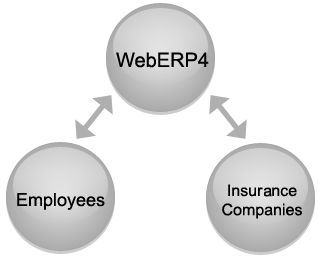
A SaaS (Software as a Service), insurance agency management system, or AMS, is a tool that optimizes existing business processes and helps to run the agency efficiently. It keeps track of all details and improves agent productivity.
It can also help with customer claims and handle commissions for agents. The agency’s operations are made faster and more efficient by the automation of multiple processes.
Essential Facts About Insurance Management Software
- Global growth in the market for insurance software management is expected to increase from USD 829.1 million by 2021 to $10760 million by 2028 at a CAGR 3.6% between 2022 and 2028.
- The global software market for insurance agencies is segmented based on geography, type of deployment, end users, applications, and geography.
- This report analyzes the P&C Insurance Software Market and contains profiles of significant firms like Agency Software Inc., ClarionDoor, Duck Creek Technologies, Guidewire Software, Inc., InsuredMine, etc.
- According to LIMRA’s 2020 Insurance Barometer Study (or approximately 160 million people), more than 50% of Americans had some type of life insurance in 2020. This percentage is only increasing.
- Gartner estimates that the global revenue from CRM systems was $39.5 billion by 2017. This made CRM the largest software market, surpassing database management systems. In 2018, CRM was the fastest-growing sector.
What Makes an Insurance Software Management System Necessary?
Software for managing insurance agencies automates many processes. This insurance software management system makes it easy, efficient, and transparent for brokers, agents, and company personnel at all stages.
Insurance automation allows you to keep all your records in one database and provide services from one platform. Insurance agents can no longer use multiple accounting programs. Instead, agents receive one easy-to-use and flexible product that allows them to manage client bases and documents without having to have a technical background.
The software’s high performance is another benefit. It can handle multiple thousand users simultaneously, and offer online support to both the head office staff and the employees at remote branches. The SaaS development service and cloud based CRM makes this possible.
The insurance business has a low rate of client requests (usually once a year). An insurance company should keep personal data for a long time. Some information may be lost when using multiple programs. Clients will need to give it back with each request. This is annoying and not efficient.
Unified CRM platforms are able to store large quantities of customer information. This reduces costs and improves the quality of service. Also, the cloud computing solutions also offer high-grade security for personal data of users.
How Does Insurance CRM Help with Agency Management?
The Insurance software management system, as the name suggests, is a digital tool that allows life, health, property & casualty and insurance agencies to automate their day-to-day tasks and improve efficiency.
You must develop CRM software that was designed to meet the specific needs of insurance agencies and is therefore ideal for managing insurance agencies. These are the main features of Insurance CRM which make agency management easier.
- CRM software has a core function that manages lead and customer relationships. CRM is the best software for managing client relationships.
- Cloud-based AMS: Agents can work seamlessly from anywhere, even at home with cloud hosting. Cloud-based insurance CRM: agencies can access their data securely from anywhere.
- Contact management: Insurance CRM helps to organize the agency’s business book in an efficient, clean, and understandable manner.
- Automating repetitive tasks can make it easier for agencies to help agents work smarter and accomplish more in a shorter time.
- Real-time analytics: With CRM, agencies can monitor the business and respond to problems before they become serious.
- Automated reports: Agents and managers don’t have to spend hours gathering data or building reports. The system generates reports on individual and team performance, policies sold reports, etc.
- Marketing: The Insurance CRM includes a drip marketing feature. This allows sales agents to create automated emails to nurture leads, send them offers, inform them about new products, etc. Automated email marketing reduces their time and helps to avoid missed communications.
- Opportunities management: The smart way to do business with existing customers is to find up-selling or cross-selling opportunities. By tracking customer activity on your website, ads and social media, Insurance CRM can help you to identify these opportunities.
Types of Insurance Software Solutions
To satisfy the requirements of various industries, a variety of insurance software types are accessible and approved by custom software development services providers These tools can often be combined to offer end-to-end management for your insurance agency.

1. Software for CRM/Insurance Lead Management
A CRM for agents in insurance connects sales teams, distribution channels and call centers to one unified portal. To provide efficient storage and easy access to customer information, as well as automated communication with customers, different functions can be combined into one solution. CRMs are used across many industries. It’s critical to comprehend which CRMs employees use before making a choice.
Software for managing insurance leads is similar to a CRM system for potential customers. It stores information, communicates with customers, prioritizes actions and tracks them from the cold lead stage up to conversion.
2. Video KYC/eKYC Solutions
Insurance is a financial product that can be vulnerable to fraud. An essential step in the procedure is onboarding. This was traditionally done in person, but video solutions allow customers to sign up virtually. Video KYC solutions allow for screenshots, geolocation and photo verification to verify ID.
One of the top insurance agency management software is Applied Epic that enables you to control and preserve an accurate image of a complete agency. For example, P&C and perks, across all jobs, regions, and business divisions.
3. Underwriting Software
Underwriting is the process of assessing the insurance company’s ability to insure a house, car or other assets. Software that underwrites can be used to create rules and policies, automating the process and decreasing errors.
4. Policy Management Software
Many insurance agents offer multiple types of insurance policies. Insurance policy management software that manages insurance policies can be used to create, administrate, and manage them. With easy access to existing policies, agents can reduce risk and improve reinsurance.
5. Document Management Software
An ERP (enterprise resource management) system wouldn’t survive without information. Your ERP data can be either input from paper documents or from another software like document management software. Document management software handles approvals and sends data to the ERP. It also stores reports that aren’t being fed into the ERP.
6. Enterprise Resource Planning Software (ERP)
An ERP system streamlines documentation tasks. An ERP system stores documents like policies, contracts, and market conditions and trends. It acts as an agency’s digital file cupboard with a searchable database that allows you to quickly find vital information.
7. Claims Management Software
Customer service is a key part of the insurance industry. Claims are an important part of insurance claims management software. There are many moving parts that could lead to miscommunications or errors.
Claims processing software can be used to assess the risk of litigation and create automated reports. It also supports workflows by supporting claims workflows. This software improves transparency and speed of the claims process, which in turn results in customer satisfaction.
8. Healthcare Claims Management Software
It streamlines the medical claims process. It also shortens the patient’s payment lifecycle while strengthening the connection between the physician and the insurance business. These solutions use automation features to allow hospitals and clinics to resolve or prevent any obstacles that could disrupt the claims processing process and billing workflow.
Insurance Software Solutions: The Key Features
You need to work with an IT consulting services provider to ensure that you have the right software for your insurance management needs. They can help you analyze your situation and provide the best features.
Let’s examine the characteristics that insurance administration software already has. This will allow professionals and executives to access all data analysis and reports while maintaining security.

1. Claim Activity Monitoring
This integrated feature allows you to access a wide range of claim-related information. This feature allows you to access information about claims such as payment components and outstanding claim reserves, event codes and perils, deductibles and dates relevant to the claim activities.
They can monitor and manage these claims efficiently without stress. They can analyze even the smallest details, such as open or closed claims activities for services.
2. Risk Parameters Lists
Comprehensive management tools combine powerful technology with substantial risk parameters. Insurance companies can now view the product insured (e.g., vehicle, house) with the pricing link, as mentioned in the underwritings. This is an enhanced version of the existing analysis methods and architecture types. It ensures that system performance is not hampered by excessive data.
3. Insurance Views
This feature allows companies to seamlessly analyze their insurance risk exposures. The system can calculate the risk on any basis, including sum insured and unit insured. It also allows for retained basis, gross, surrendered, or surrendered reinsurance.
4. Dynamic Calculations
With the help of unearned and fast earned calculations, companies can monitor trends and analyze profitability on a daily basis. Insurance companies can calculate unearned reserve and premium earned through the section on individual policy coverage.
5. Insurance Metrics
Insurance agencies can determine loss ratio, risk cost and loss frequency per policy. This information is based on gross, net and reinsurance basis. Advanced analytical reports are also available to companies.
6. Time Bases
Insurance agencies are based on policies, and this feature allows you to calculate and analyze all insurance activities that are based on time. This tool offers a policy origin and snapshot data analysis in addition to functioning, unintentional, and monetary accounting analysis.
It is extremely supportive of interdependencies and provides a reasonable framework for analyzing and preparing a report on actuaries and reinsurance managers as well as claims managers, underwriters and accountants.
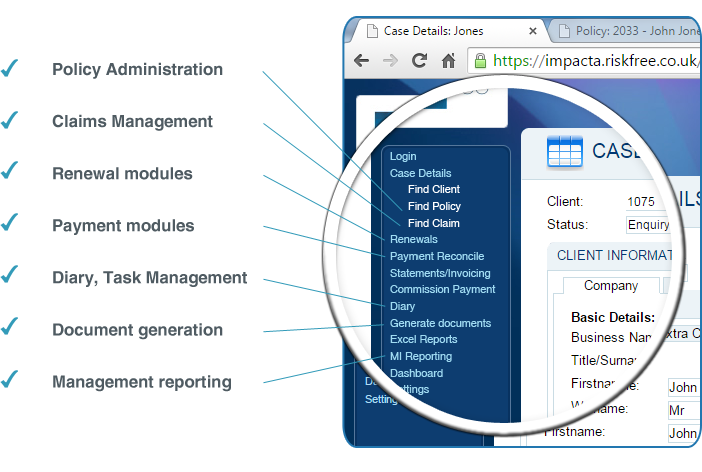
7. Reporting on Change
This integration is useful for companies that want to examine the changes in hierarchical chains. This integrated mobility management solution allows insurers to analyze their distributed channel sales and provides a report that shows profitable performance. It also gives you an overall view of organizational structure changes.
8. Multicurrency Calculations
This advanced solution includes a built-in mechanism such as multi-currency information and index adjusted reporting. Both of these solutions aim to cover the most important aspects. These include multiple currency conversions and specific territorial index standards for long-tail claim statistics.
9. Renewal and lapse Evaluations
For companies that have multiple clients and premiums that auto-renew, it is necessary to identify these policies. This feature allows you to market your product by providing adequate support.
10. Crossover Report
The IT consultation services provider will develop the data model for the insurance management software. This provides insurance companies with answers to sections or coverages of insured products and objects. The feature also provides insight into the business behavior and decisions of the underwriters.
11. Rollback Time
This feature allows users to access and analyze insurance reports from any location. Professional insurers can use this feature to view the underwritings and the date of writing in order to analyze the financial results.
12. Allocation of IBNR
Insurance agencies need to calculate incurred, but not reported allocations. Companies can use useful templates to calculate the actuary at any level, from claim level to portfolio level.
13. Claims Reserves Analysis
This advanced feature in insurance software provides statistics after comparing times. This powerful feature can be integrated with a mechanism to provide detailed insights into claim reserves.
Cost to Build Insurance Management Software

Software development for insurance is not something that can be done by freelancers. It is advised that you collaborate with a product manufacturing firm to complete the task.
If you hire dedicated software developers, the cost will be as low as $15 per hour, between $20and $27 per hour. The hourly rate will change based on the project size, location, sales volume, and online payment services.
Let’s assume that the cost of your insurance agency management software development is between $15000 and $30000. This section will discuss the factors and methods that affect the cost of developing insurance management software solutions.
Methods for Evaluating Cost
- Empirical Method– This method gives a detailed statistical analysis of the research done and the investigation performed for the project, including cost.
- Structural-algorithmic Method – This approach works well for analyzing and determining project costs because it is based on statistical information from projects that have already been completed.
- Expert Estimates– This is where the cost estimation is done after a thorough interview with the outsourcing professionals regarding their development expertise. Their knowledge can be obtained by using relevant FAQs.
- Software Life Cycle Model – The time and effort required to finish the job are used in this expense estimation technique.
- Constructive Cost Model– This model explains cost dependence over code scope and labor input.
Factors that Influence the Insurance Management Software Cost
Software for insurance calculates complex calculations and manages them. You want it to be robust and fast. However, a technology-integrated software solution must undergo many changes before it can be deployed.
Thus, you must consider the factors that affect the software development cost that is given by a cloud computing app development company.
So, let’s check out the essential factors:
1. Feature Count
There are many features in insurance software that can be used to manage claims, policies, data compliance, utilization, and much more. Each feature must be designed by developers to simplify mundane tasks and automate manual labor. Additional or custom features can take more time than expected and may result in higher costs.
2. Number of Team Members
The cost of your project is also affected by the number of developers, testers, and designers assigned to it. The IT consulting company will need to hire more developers if the deadline is short. The charges for expert and experienced staff are higher than those of a team with an average skill level.
3. Project Duration
The number of workdays spent on project development is the most important factor in determining project cost. Before the design and development, a document is prepared that details the productivity per day, available hours, delay calculations, multitasking productivity loss and other factors.
4. Risks
These are the uncertainties that may occur during project development at any time. This can delay the project’s deployment time and indirectly increase the software development cost.
5. Budget Revision
A project collaboration agreement is for a specific period.The project budget as a whole may be significantly impacted by any cause for project extension. It is advised that the job be finished on schedule without the need for any changes.
6. Types of Insurance
There are many insurance programs available. Not all agencies offer the same range of services. While some agencies may offer life and property insurance, others might offer only business-related solutions or vehicle insurance. It is important for associate enterprise software development service to fully understand the requirements and then to conduct a detailed business analysis to provide solutions at a fine level.
7. Overall Schedule List
Documentation begins with a list containing milestones, activities and delivery dates. This roster is kept up to date until the job is finished. Pre-defined elements are essential for keeping the project cost low. But, product delivery delays can be caused by changes.
8. Pre-Study
Pre-study costs are an additional cost for business analysis. This extra cost is directly proportional with the quality and accuracy in business project development. Pre-study costs vary depending on project size. However, it is always worthwhile to invest in business analysis.
9. Collaboration
This is a prerequisite factor in determining the cost-effectiveness and scalability of a project. It is possible to influence the accuracy of a project and its cost estimation by using effective management and well-communicative cooperation.
Conclusion
A good insurance software management system is essential for any agency to succeed. It handles client relationships, the order book, and simplifies time-consuming and laborious duties.
A well-designed insurance agency management system will save money, retain customers, and increase the company’s revenue. The top insurance agency management software that satisfies your requirements should be purchased.
Now that you know the cost to build an insurance software management system, you must get an idea about the cost and decide the budget for the development of a software.
You can hire a software product development company and take assistance in developing a robust insurance software management system for your business and help you reach greater heights.
Frequently Asked Questions
How To Create E-Scooter Sharing App?
If you want to create an E-scooter sharing app like filld, then you must follow the step-by-step guide to understand the development thoroughly.
- Validate Your Business Plan
- Perform Market & Competitor Research
- Make a List of Features & Functions
- Hire E Scooter App Development Company
- Launch and Growth
What Are The Essential Features Of E-Scooter App?
We have mentioned some of the most crucial features which are must in every E-Scooter app development
- Access to E-Scooters location
- Barcode QR functionality
- Real-Time Vehicle tracking
- Payment Gateway
- Notifications Alert
- Feedback and Rating
- 24*7 Customer support
What Are The Most Popular E-Scooter Apps?
Some trending E-Scooter apps are Lime, Spin, Bird, and Skip.

